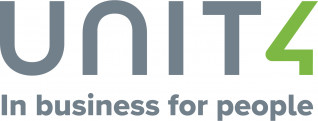
Part 1 – Your remote work policy should outline the importance of protecting confidential information in remote work settings.
Covid-19 changed the way many organizations do business and organizations have had to learn how to navigate the many challenges of remote work: lack of face-to-face supervision, keeping employees engaged and motivated and managing the work environment are just some of the challenges with remote work. During the pandemic, many employers shifted to a full or hybrid remote work arrangement, but with COVID restrictions being lifted and life slowly returning to the pre-pandemic norm, what was just a temporary measure necessitated by the COVID pandemic is becoming a more permanent arrangement by choice.
Whether you choose to adapt to a fully remote workforce or a hybrid remote work arrangement, employee’s activities while working remotely should be subject to the same standards that are applied at the organization’s offices regarding confidentiality, security, quality, and access to business documents just to name a few. In addition, an employer must continue to comply with applicable employment legislation and continue to ensure the health and safety of employees to minimize the risks of workplace injuries while working remotely. To help minimize liabilities, employers who are considering implementing a permanent remote work arrangement should ensure that they establish and implement a clear remote work policy along with a well drafted remote work agreement between the employer and the employees.
Below are some key areas to consider when creating a remote work policy:
Availability and Hours of Work
A remote work policy should clearly outline availability expectations. One of the disadvantages of working remotely is that employees are in various locations. This sometimes makes it difficult to have spontaneous meetings or pop by someone’s desk for a quick meeting or chat about business. A solution for this may be to incorporate schedule requirements including structured, periodic check-in times with employees. While there has been much written recently about the value of flexibility for employees who can have greater control over their schedules while working remotely, it may still be necessary to set parameters for hours of work and set rules for overtime. So, regardless of the flexibility of work schedules, the employer may want to set expectations for employees to be accessible during particular hours and to be available to respond promptly to any time-sensitive calls, emails, or other communications from the organization’s clients or other third parties critical to the organization’s purposes.
Physical Environment
If there is a preference for a physical working environment for your employees, outline these expectations in your policy. Ensure your employees know what the requirements are for a physical working environment whether it be in the employee’s home or alternative location. If necessary, the employer may require employees to provide addresses and locations from which they are working remotely and update these when necessary. Employers may wish to establish expectations for dependent care arrangements and personal responsibilities to ensure that employees are able to meet their job responsibilities without interruption or distraction.
Security
Security is a big concern with remote work. Your remote work policy should outline the importance of protecting confidential information in remote work settings. Your policy should set guidelines for working remotely to secure records and prevent unauthorized disclosure of confidential business information.
Employers should consider the processes for storing business documents, especially sensitive and/or highly confidential files, on the organization’s secure servers and not on the employee’s remote hard drives.
Your organization might consider specific policies mandating secure internet connections or virtual private networks with a strict exclusion of public wi-fi. And there should be a policy and process for reporting a security breach if the employee has any reason to believe that business information has been accessed by any unauthorized person(s).
And, of course, if budgets permit, it may be prudent to provide remote-work employees with secure computers and other hardware, owned by the organization. Related policies could then restrict the processing or storage of any of the organization’s information on the employee’s personal equipment.
This is a two-part conversation, so watch next week for Part 2 of our article, where we’ll cover, Client Confidentiality and Health & Safety considerations.
————-
Through our collaborative approaches, innovative HR products and customized advisory solutions we impact four leadership priorities: managing risk, driving productivity, strengthening talent capabilities and supporting your bottom line.
By Adrian Johnson, ASSOCIUM Consultants
Let’s connect to find out how ASSOCIUM Consultants can help your organization.







.png)



